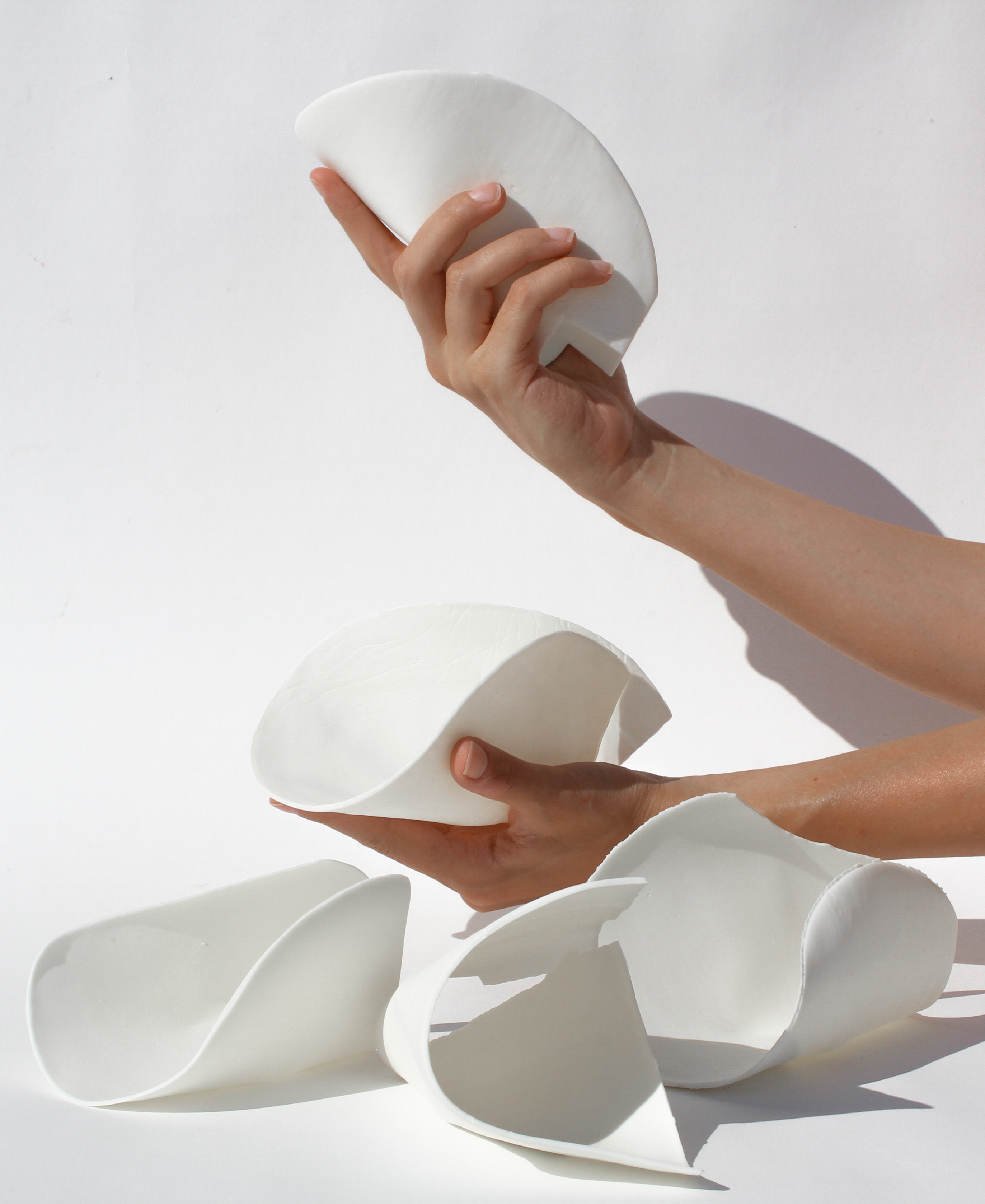Porcelain Deformation
Porcelain has been known as the most prestigious type of pottery for its delicacy, strength, translucency and its white colour. The production process of porcelain is more demanding than other type of clays, earthenware and stoneware because of the vitrification and the formation of some of the minerals within the body at high temperatures. Deformation and shrinkage during the firing process brings restrictions on the form selection and it has been a challenge to reach the desired shape by ceramists.
Porcelain reaches a molten-like consistency at high temperatures around 1250-1300 Celsius degrees during firing and this process is called sintering. Due to this unstable step of the production process, form of the porcelain object is very important to keep the shape as it was before high firing. However, we wanted to experiment with this material feature and the controllability of it to see the results of deformation when it is desired. We changed the parameters of thickness, size and offcuts.

Deformation tests single support. SE, 2020.
The flat bone-china pieces are high fired and the new forms are created thanks to the deformation. 1 mm thick and 23 cm in diameter, flat pieces are completely folded on the sides and created a 3D form. This fascination of the material behavior led us producing objects without designing their shape. The results are shell-like plates which ergonomically fits to the hands. The beauty of the material is connected to the way of effortless making and the new way of designing forms by using the material behavior.

Deformation test two supports. SE, 2020.

Deformation samples. SE, 2020.

Deformation samples. SE, 2020.

Deformation sample orthogonal. SE, 2020.

Deformation sample round. SE, 2020.

Deformation sample three direction. SE, 2020.

Collection porcelain deformation. SE, 2020.

Scale porcelain deformation. SE, 2020.
Project info
2020 - Zürich
Porcelain - Bone China